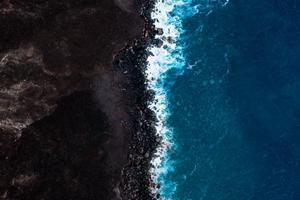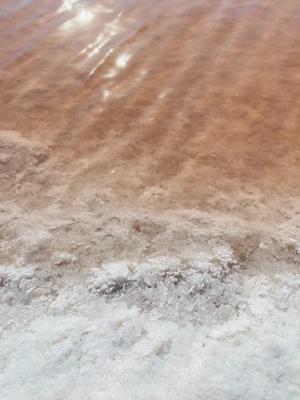the history of earth day, a timeline
this year will mark the 51st anniversary of earth day. today, we revisit the important dates that made it what it is today.
June 4, 1916: Earth Day founder Gaylord Nelson, inspired by the student anti-war movement, wanted to infuse the energy of student anti-war protests with an emerging public consciousness about air and water pollution. Senator Nelson announced the idea for a teach-in on college campuses to the national media, and persuaded Pete McCloskey, a conservation-minded Republican Congressman, to serve as his co-chair. They recruited Denis Hayes, a young activist, to organize the campus teach-ins and they choose April 22, a weekday falling between Spring Break and Final Exams, to maximize the greatest student participation.
Recognizing its potential to inspire all Americans, Hayes built a national staff of 85 to promote events across the land and the effort soon broadened to include a wide range of organizations, faith groups, and others. They changed the name to Earth Day, which immediately sparked national media attention, and caught on across the country. Earth Day inspired 20 million Americans — at the time, 10% of the total population of the United States — to take to the streets, parks and auditoriums to demonstrate against the impacts of 150 years of industrial development which had left a growing legacy of serious human health impacts.
1962: Rachel Carson published Silent Spring. The best seller sounded an alarm about the potential dangers and consequences of widespread pesticide use and helped raise the environmental consciousness of the American public. The book represented a watershed moment, selling more than 500,000 copies in 24 countries as it raised public awareness and concern for living organisms, the environment and the inextricable links between pollution and public health.
1963: Senator Nelson accompanies President John F. Kennedy on a speaking tour around the U.S. to raise awareness about environmental issues; however, protecting the environment remains a low priority for most politicians and citizens.
1969: Chemical waste released into Cleveland’s Cuyahoga River causes it to catch fire. The event becomes symbolic of how industrial pollution is damaging America’s natural resources.
1969: Inspired by the “teach-ins” held by Vietnam War protests on U.S. college campuses, Senator Gaylord Nelson announces the idea for Earth Day, a large-scale, grassroots demonstration against the degradation of America’s natural resources.
April 22, 1970: Twenty million people participate in activities for the first Earth Day in the United States.
1970: Environmental advocacy group Natural Resources Defense Council (NRDC) founded. Today, the group has over 1 million members, a staff of over 300 scientists, lawyers and other specialists and offices in New York City, Beijing, Chicago, Los Angeles, San Francisco and Washington, D.C.
December 1970: The U.S. Environmental Protection Agency is established by President Richard Nixon in order to protect human health and safeguard the natural environment—air, water and land. Before the agency was founded, “the federal government was not structured to make a coordinated attack on the pollutants that harm human health and degrade the environment,” according to EPA.gov.
1971: Environmental activist organization Greenpeace is founded. Today, the group, which has campaigned against nuclear power, whaling and global warming, among other issues, has offices in 55 countries around the world.
1972: Congress passes the Clean Water Act, which limits pollutants in rivers, lakes and streams.
1973: Congress passes the Endangered Species Act to protect animals and their ecosystems.
1980: After 18 years in the U.S. Senate, during which time he advocated for numerous environmental causes, Gaylord Nelson loses his race for a fourth term in office. After leaving the Senate, Nelson becomes a counselor for The Wilderness Society, an environmental group.
1990: The 20th anniversary Earth Day celebrations go global, with participants in over 140 countries.
1995: Gaylord Nelson receives the Presidential Medal of Freedom, the highest award given to a civilian, in honor of his environmental work. President Bill Clinton says of Nelson: “As the father of Earth Day, he is the grandfather of all that grew out of that event.”
2000: Hundreds of millions of people in 184 countries celebrate the 30th anniversary of Earth Day, with a focus on “clean energy.”
July 3, 2005: Earth Day founder Gaylord Nelson dies at age 89. His New York Timesobituary notes that in addition to his Earth Day work, Nelson “was a principal sponsor of laws that preserved the 2,000-mile Appalachian Trail, established fuel efficiency standards in automobiles, sought to control damage from strip mining and led to a ban on the insecticide DDT.”
2007: Capacity crowds attend Green Apple Festival Earth Day events in New York City, San Francisco and Chicago. More than 40,000 people show up for Earth Day festivities at Chicago’s Lincoln Park Zoo, setting a single-day attendance record. Earth Day Network members host 10,000 Earth Day events around the world.
2010: In honor of the 40th anniversary of Earth Day a climate rally and concert is held on the National Mall in Washington, D.C.
August 2018: Swedish teenager and climate activist Greta Thunberg begins protesting in front of Swedish Parliament with a sign: “School Strike for Climate.” Her protest to raise awareness for global warming catches the world by storm and by November 2018, over 17,000 students in 24 countries are participating in climate strikes.
August 2019: The United Nations Climate Summit takes place in New York City. It finds that “1.5℃ is the socially, economically, politically and scientifically safe limit to global warming by the end of this century,” and sets a deadline for achieving net zero emissions to 2050.
April 22, 2020: The 50th anniversary of Earth Day is centered around the theme of “climate action” in honor of worldwide efforts to halt global warming. It will be celebrated with The Great Global Cleanup, a day dedicated to removing trash from green spaces and urban centers.
Resources: Earthday.com
“FRILUFTSLIV”: THE NORDIC WAY OF CELEBRATING NATURE
A passion for nature cuts to the heart of what Scandinavians call friluftsliv (pronounced free-loofts-liv). The expression literally translates as ‘open-air living’.
As we think about the importance of nature — we were inspired by the “friluftsliv”, when thinking about how to infuse this way of thinking into our children’s lives.
The Idea of Government-subsidized preschools, 480 days paid maternity leave, neighborhood rec centers, ample recess, forest kindergartens, drop-in after school programs (aka fritids), outdoor classrooms, public access to private lands, and open-air napping. These are just some of the perks of raising kids in Scandinavia, where "friluftsliv", the Swedish term for living close to nature, isn’t just a parenting strategy, it’s a way of life.⠀⠀⠀⠀⠀⠀⠀⠀
“Friluftsliv can encompass anything from hiking to berry picking and fishing or be as simple as going for a nature walk or bike ride near one’s home,” writes Linda Åkeson McGurk in her book, There’s No Such Thing as Bad Weather: A Scandinavian Mom’s Secrets for Raising Healthy, Resilient, and Confident Kids. Friluftsliv isn’t competitive; it’s simply a chance to get outside and enjoy nature—winter or summer, day or night, rain or shine, mud, sleet, or snow.⠀⠀⠀⠀⠀⠀⠀
“It would be very easy to make excuses for not going outside,” writes McGurk, who was born and raised in Sweden and moved to the United States after graduating from journalism school. For much of the year, the days are notoriously cold, wet, and dark, but the climate doesn’t dampen the Swedes’ fervent enthusiasm for friluftsliv. If anything, it stokes it. With an abundance of forests and wild places, even in urban Stockholm (40 percent of the city is public open space), Scandinavian children enjoy more unstructured outdoor playtime—the average preschooler in Stockholm spends six hours outside each day in good weather and an impressive 90 minutes in winter—and a healthier balance between screen time and green time.
OTHER WAYS TO PARTICIPATE
Join the global earth challenge
AND BE THOUGHTFUL ABOUT HOW YOU CONSUME…
For Earth Month, we’ve gathered some of our favorite brands that are doing “business for the good of the planet”. And it’s true, there is not one “truly perfect sustainable” brand out there, but what matters most to us, is that the brand is on a journey to doing the best they can to lessen their environmental impact — and that they are taking the steps to make it happen.
CLOTHES
EILEEN FISHER – A brand that believes in ethical, timeless, well-made clothes designed to work together, wear effortlessly and be part of a responsible lifecycle. They meet—and exceed the requirements for B Corp Certification ( business transparency, credibility and ethical values). Plus, their brand RENEW takes back clothes and re-sells them — a circular model that many brands look up to.
GIRLFRIEND COLLECTIVE — Here’s a breakdown of the amazing things they are doing. Packaging: 100% recycled and recyclable. Compressive Leggings + Bras: made from 79% recycled polyester and 21% spandex, their leggings are made from 25 recycled post-consumer bottles and our bras are made from 11. Cupro: their tees and tanks are 100% cupro, a delicate fiber made from waste the cotton industry leaves behind. Reusable Pouch: their reusable pouch is made with the same RPET as our bras and leggings. So not only is it reusable and adorable, it’s just as good for the earth as the rest of our line.
FARM RIO – A Brazilian company that’s committed to giving back to the environment and helping recover endangered forest ecosystems. For each purchase made on Farm Rio's website, in their stores, and at other authorized retailers carrying the brand, they donate one tree to be planted in the Amazon rainforest.
ALLBIRDS — They have a plan to eliminate their carbon footprint, and it’s already in action. First, they measure the emissions of everything from their raw materials to their end of life. Next, they reduce our impact by incorporating things like natural and recycled materials. And finally, they offset the little bit that’s left with carbon offsets, making Allbirds a completely carbon neutral business.
HOME
PROSPERITY CANDLE — Eco-friendly candles that are paraffin-free, ethically handmade and packaged with recycled materials to be mindful to the environment.
EARTHHERO — As an eco-friendly online marketplace, EarthHero has done the work so you don’t have to. You can pick from products that are sourced, manufactured, and shipped in a way that protects our planet’s future.
BLUELAND — The eco-friendly brand streamlines green cleaning by using reusable bottles and dissolvable tablets. Just fill up the bottles with water, pop one tablet in to dissolve, and then you're ready to clean!
GOODBYE DETERGENT — We especially love their “spaghetti scrub” for doing dishes. It's comprised of cotton strips and pulverized, dried corn cobs, giving its noodle-like strands a coarse, but not too rough texture — for swapping out sponges for good.
BATH
HIBAR —Salon-quality performance and experience, natural ingredients, and, of course, beautiful plastic-free packaging.
BYHUMANKIND — By using products from by Humankind for just one year, you’ll save the planet up to 5 pounds of single-use plastic waste. They offer almost everything you need in personal from deodorants to mouthwash.
REEL — Bamboo toilet paper. 27,000 trees are cut down daily to make toilet paper. Reel is made from tree-free, 100% bamboo paper. Zero plastic packaging, even the tape.
OSMIA — Using an only-the-essentials approach to optimal skin health, Osmia products are made with the highest quality natural ingredients—always consciously-sourced, and organic whenever possible. All Osmia products are made WITHOUT the following ingredients: parabens, phthalates, sulfates, petrochemicals, ethoxylated ingredients, synthetic color, and synthetic fragrance.
FOOD
MISFITS MARKET — They have a two-pronged mission: to provide affordable access to healthy food and to fight the food waste crisis. All of the produce in your weekly Misfits Market box is certified organic and non-GMO, sourced from hand-picked farms and partners in our region and across the Americas. This means that they avoid using synthetic fertilizers and pesticides, are prohibited from using genetic engineering or genetically modified organisms, and, according to the USDA, "rely on natural substances and physical, mechanical, or biologically based farming methods to the fullest extent possible.



